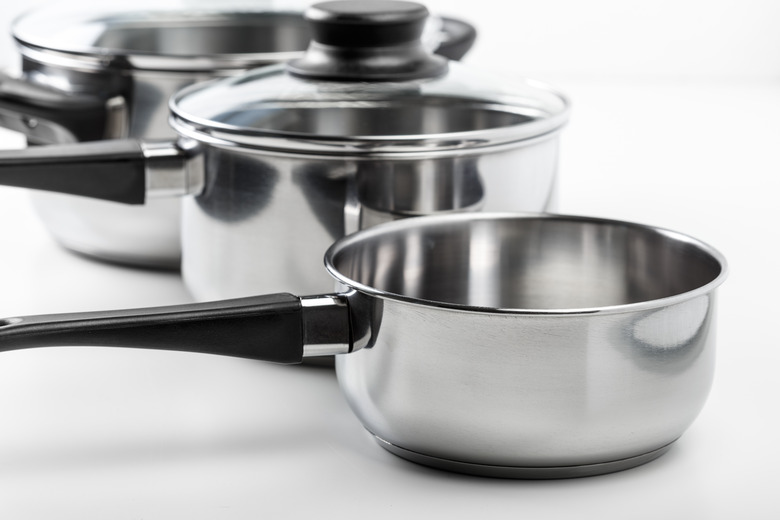How To Clean Club Aluminum Cookware
Club Aluminum cookware comes in an array of colors, shapes and sizes; But it's the cookware's consistent heat conductivity, affordable price tag and storied past that makes many of the original pieces collector's items. The colorful, midcentury look continues to attract cooks to the Club Aluminum fan club.
Tip
Using nonabrasive cleaners, tools and methods will keep Club Aluminum in good shape for generations.
What Is Club Aluminum Cookware?
Introduced in the last century, Club Aluminum cookware brought an entirely new and affordable way to create and sell useful aluminum pots and pans. It was originally sold at parties at its inception in 1923. These small groups of interested customers were held by individual contractors, much like its future counterpart companies Tupperware and Pampered Chef.
Originally called the Club Aluminum Utensil Company, the Chicago-based business created an extensive catalog of processed, hardened aluminum. These trademark tight-fitting covers sealed in moisture better than other pans, were lighter than the common cast iron used for frying, sautéing and boiling and came in a wide variety of sizes.
The company enjoyed widespread popularity and plentiful parties through the '20s and into the early '30s before the depression ended its profitable run with home cooks. The company was sold to Herbert Taylor after declaring bankruptcy in 1933 and continued to be popular through the next century. According to Consumer Reports, the hard-coat anodized cookware is safe and hardy.
Club Aluminum Cookware Cleaning
Given a regular cleaning, Club Aluminum cookware can shine for generations. Aside from dunking the Club Aluminum pot or pan in a tub of soapy water and giving it a good scrub with a soft sponge, there are a few ways to get the cookware gleaming from lid to base. Using abrasive cleaning detergents and/or harsh nylon, plastic or steel brushes is not recommended for Club Aluminum pots and pans.
A homemade mix of 4 cups of warm water to 1 tablespoon of mild dish washing liquid should take down typical greasy films and sautéed burn marks. For more stubborn stains, make a paste of one part baking soda to one part water and apply it to the surface of the pot or pan. Allow that to sit for at least 20 minutes or overnight before rinsing and washing clean.
Cleaning Club Aluminum Handles
Club Aluminum cookware handles need extra attention after a long interval between deep cleanings. The nooks and crannies around the handles can get caked with oils and grease from saucy entrees and are often overlooked with regular cleaning.
A toothbrush or long-handled, narrow bottlebrush can reach the crevices at each corner of the handles where they meet the main body of the pot. Give the angled areas a good amount of attention to keep the handles free from greasy debris.
Cleaning Specialty Club Aluminum Cookware
Club Aluminum griddle pans can be best cleaned with a narrow scrub sponge and a long handle. This can get into the grooves and ridges on the Club Aluminum griddle pans easily. The long handle allows you to apply a good amount of pressure and wield the brush into the narrow areas of the griddle pan.
A Club Aluminum Dutch oven is oven-safe and has superior heat conductivity for slow roasting and braising dishes. When it gets burnt-on food or puddles of hardened grease or oil, it can be scoured with a soft nylon brush or sponge.
